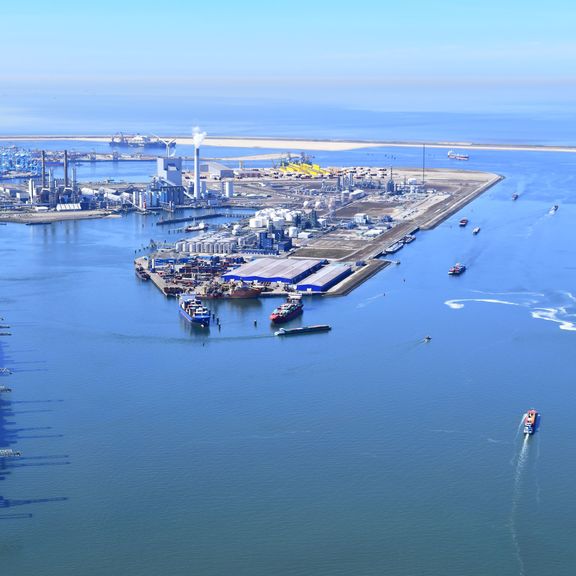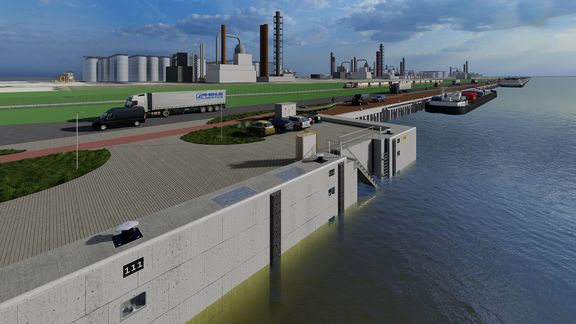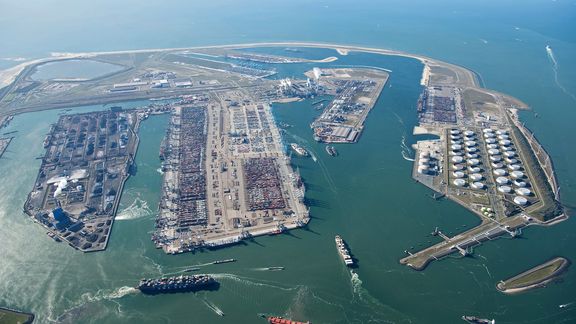
Yangtzekanaal Widening Programme
Over the coming years, container ships will navigate the Yangtzekanaal in greater numbers and dimensions towards the Maasvlakte 2 terminals. To give the current ships more room to move, and to allow ships that are only growing in size to pass, the navigable channel (the bed) of the Yangtzekanaal will be widened along its entire length over the coming years. This is part of our drive to develop a safe, accessible and efficient port of the future.
What is going to happen?
The programme comprises three sub-projects:
- Phase A (2023-2025) – construction of 500 metres of quayside for tugs (including shore-based power). Implementation of Phase A enables two-way traffic for ships up to 18,000 TEU.
- Phase B (2024-2027) – construction of 1,400 metres of quayside for inland vessels (including shore-based power). Implementation of Phase B enables two-way traffic for vessels up to 24,000 TEU (the existing fleet).
- Phase C (after 2028) – dredging to widen and deepen the waterway. The implementation of Phase C will allow two-way traffic for two Future 1 vessels up to 30,000 TEU, with a maximum draught of 17.3 metres for one-way traffic with larger vessels (the Future 1 vessel is still under development).
Phase A is currently being executed
At the southern side of the Yangtzekanaal, we are realising a quay for 12 tugs. The new quay lies directly at the entrance to the port of Rotterdam, so close to the largest container terminals. Currently tug moorings include the Scheurhaven, Tennesseehaven and Prinses Margriethaven, but extra capacity is required. The main towing services in the port of Rotterdam are Boluda Towage, Svitzer and Fairplay.
Phase B under preparation
Meanwhile, preparations for phase B have also started. To the west of the existing Antarcticakade, 1,400 metres of inland-shipping quay wall will be constructed. This quay wall will accommodate about 30 berths for various vessel sizes and will be equipped with shore power. There will also be a heavy load zone – for one-off transshipment of freight or specific materials.
The project was tendered in a two-phase contract. The first phase (the construction team) was awarded in September 2024. Together with the contractor, the design is being optimised and further developed. This phase will last until Q1 2025. After which the implementation phase will be awarded. Construction work is due to start no later than summer 2025. Completion is scheduled for 2027.

PLANNING
The construction of 500 metres of tug quay started in September 2023, with the completion and commissioning planned for the beginning of 2025.
Image: Illustration of the tugboat quay(Source: Witteveen & BOs)
The extra berths for tugs and inland vessels strengthen the multi-modal hinterland capacity, as these berths enable the port to absorb the predicted growth in shipping.
Extra attention is paid to sustainability, as work is carried out according to the principle of a sustainable construction site. CO2 emissions are avoided as much as possible on the construction site, including by using electrical equipment and construction flows. The contractor combination of Hakker, De Klerk and Van Oord achieves a reduction in construction site emissions of more than 80% compared to traditional construction methods.
Yangtzekanaal Widening Programme
The projects are challenging because the work is taking place in existing areas with a working terminal and ongoing shipping. Yangtzekanaal Widening Programme
The realisation of the quay and associated dredging will also enable larger container ships of up to 18,000 TEU to pass (two-way traffic).
More information
YANGTZEKANAAL
The Yangtzekanaal (pictured right) was created in 2012 when the former Yangtzehaven was excavated. The channel connects the Beerkanaal with the Maasvlakte 2 port basins and provides access to Prinses Amaliahaven, Prinses Arianehaven, Prinses Alexiahaven and Prinses Margriethaven.
